THIS CONTENT IS BROUGHT TO YOU BY NIBIO - Norwegian Institute of Bioeconomy Research - read more
Light traps can tell us more about nocturnal moths
These traps do not capture the insects – they photograph them instead.
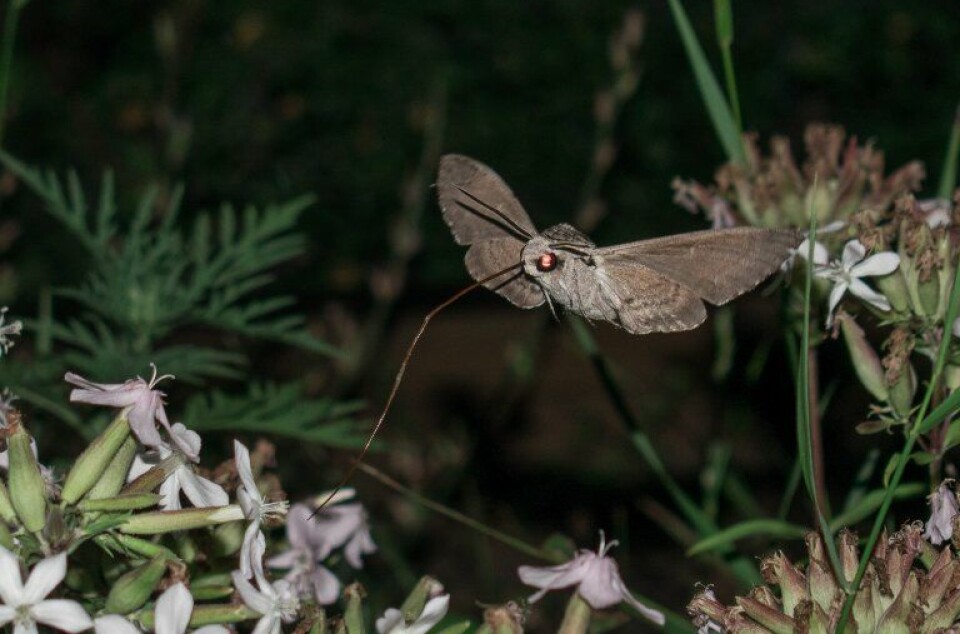
In Norway, there are more than 2,300 species of butterflies and moths. You may know some of the large, colourful butterflies like the common brimstone, peacock butterfly, mourning cloak, or old world swallowtail.
But did you know that 95 per cent of butterflies and moths in Norway are small, camouflaged, and active at night?
“Nocturnal moths are a group that has received little attention. Their importance is understudied, perhaps precisely because they are active at night,” says Fride Høistad Schei.
She is a researcher at the Norwegian Institute of Bioeconomy Research (NIBIO). Her specialty is biodiversity in forests.
“Many nocturnal moths are important pollinators. We believe they play a more significant role in forest pollination than previously realised,” she says.
New tools offer new opportunities
Digital tools offer researchers new opportunities to map and monitor nature.
In a new project, researchers at NIBIO are focusing specifically on these nocturnal and little-known moths.
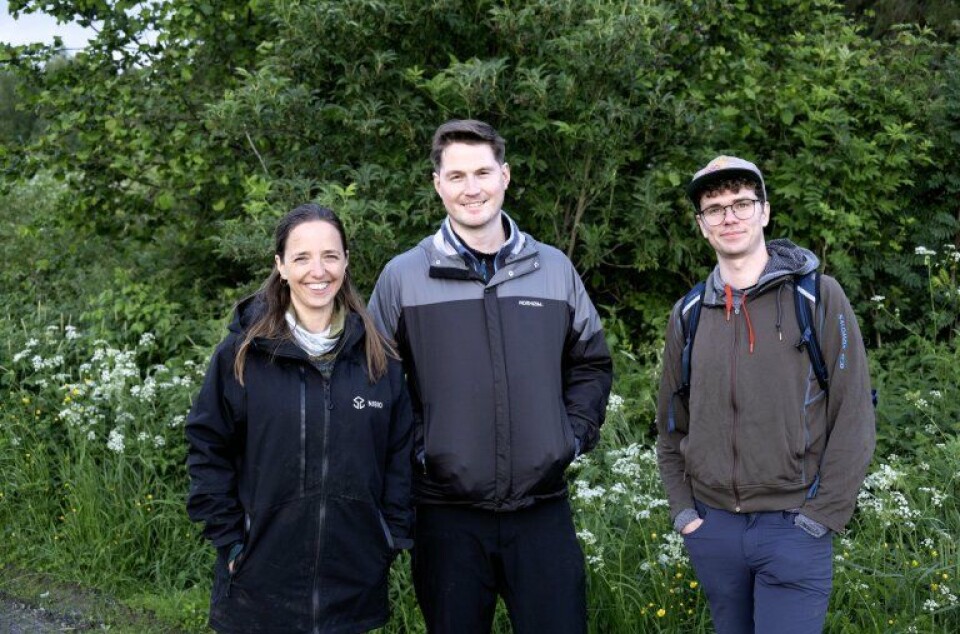
Together with entomologist Jørund Johansen and robotics engineer Steffan Lloyd, both also at NIBIO, Fride Høistad Schei has developed a new digital light trap.
The researchers were inspired by a Danish study, but the new trap is more advanced. It has the potential to identify far more species.
The goal is for the light trap to take photos that can be analysed using artificial intelligence. This can provide valuable insight into which species are present, when they are active, and in what numbers.
Photographed in a light trap
It’s a bright summer evening in early June. In a forest area 60 kilometres southeast of Oslo, the three researchers are assembling the automatic light trap for the first time.
The light trap, named MothWatcher, consists of a wooden box with a built-in camera, flash, and a special LepiLED lamp. This LED light source emits UV, blue, green, and white light to attract moths and other nocturnal insects.
It uses the same type of light as traditional traps.
But unlike traditional traps, which collect insects in a container, this digital trap does not capture them. If they land on the white light plate, a photo is taken, but they are free to fly away whenever they want.
The camera takes a picture of the white surface every five seconds during a pre-set time period. The light is only on at night, so the trap only attracts insects when it is dark.
Using artificial intelligence
The researchers also use AI to identify the individuals in the images.
“There are several reasons why artificial intelligence is well-suited for identifying nocturnal moths,” says Jørund Johansen.
He explains that many species have distinct wing patterns that allow for them to be identified from the images.
The light mounted behind a white surface encourages moths to remain still for longer, which improves image quality.
"The white background provides a uniform surface, making it easier to distinguish individuals than if the background were natural vegetation,” he says.
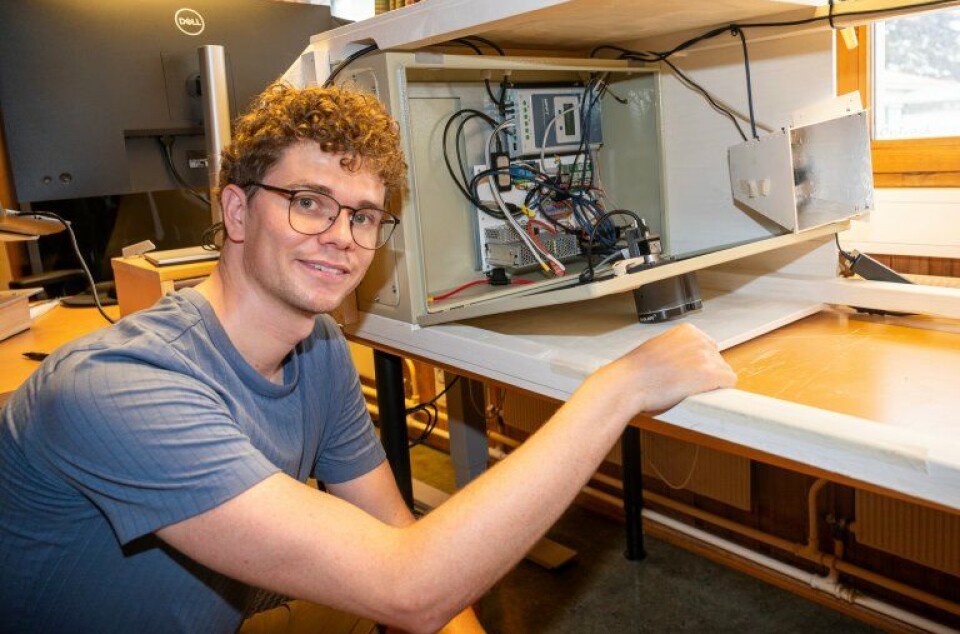
“The light trap is powered by a large battery connected to a solar panel. It charges during the day when the trap isn’t in use, and has a 4G internet connection for remote monitoring in the field,” Lloyd explains.
Large amounts of data collected
Last year's season served mostly as a test phase. Would the technology work in the field? Would the images be good enough?
After nearly a year, they are now seeing results. And so far, the researchers are satisfied.
The light trap was deployed from June to November. The material has not been fully analysed yet, but spot checks show over a thousand insect images.
“We experimented with different light settings and background placements. We will continue to adjust to improve image quality,” says Lloyd.
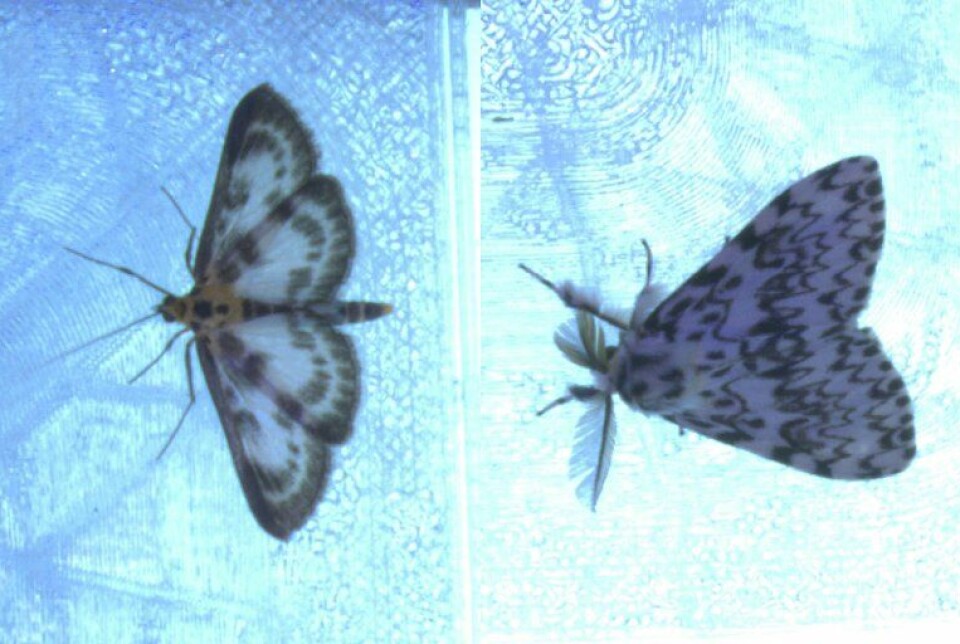
However, last year’s data collection was affected by power availability. Norwegian summers aren’t always sunny, and extended bad weather reduced the power supply.
This year, the light trap will be placed near a power source, and the researchers are considering upgrading with more solar panels.
“We were concerned birds might see the trap as a snack bar. So we avoided using the attractive light during dusk and dawn when birds are very active. Fortunately, we got no photos of hungry birds,” says Schei.
Developing a new and improved system
“By combining NIBIO’s expertise in technology, AI, and biodiversity, we're working on developing MothWatcher 2.0,” says Schei.
She adds that they will also continue working with the material they already have together with new data collected this year.
“We want to find out if this technology can be used in future monitoring efforts,” she says.
So far, the researchers have used species recognition algorithms from the Norwegian Biodiversity Information Centre. This open service already provides good identification.
However, the researchers want to develop their own AI tools.
“Our goal is to create our own identification algorithms. That will require a lot of work. Among other things, we need many images to train the AI,” says Schei.
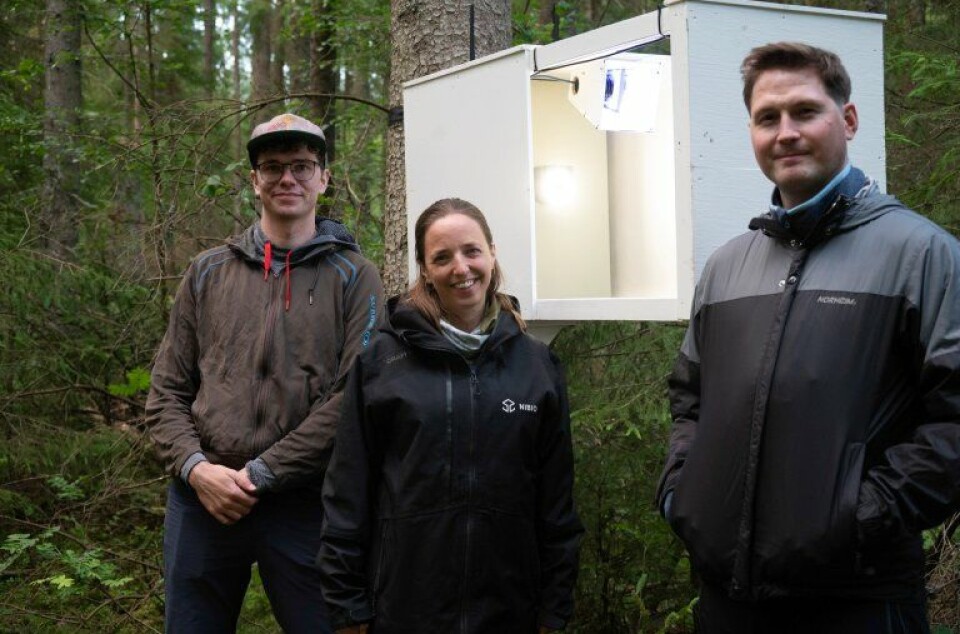
She also says they want to compare their data with data from more traditional light traps.
“They might catch different species, but I don’t really see why that should be the case,” the researcher says.
Reference:
Bjerge et al. An Automated Light Trap to Monitor Moths (Lepidoptera) Using Computer Vision-Based Tracking and Deep Learning, Sensors, 2021. DOI: 10.3390/s21020343
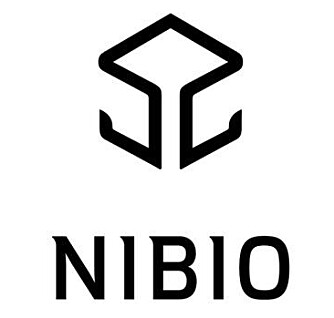
This content is paid for and presented by NIBIO - Norwegian Institute of Bioeconomy Research
This content is created by NIBIO's communication staff, who use this platform to communicate science and share results from research with the public. NIBIO is one of more than 80 owners of ScienceNorway.no. Read more here.
More content from NIBIO:
-
This colourful bird is thriving in Norway
-
Can drone-mounted tree planting replace manual tree planting?
-
Climate change and land use threaten Sámi reindeer husbandry
-
Researchers are now going to monitor carbon in forest and grassland soils
-
Nine facts about Norwegian agriculture
-
Within 10 years, Norway could grow its own melons and avocados




































